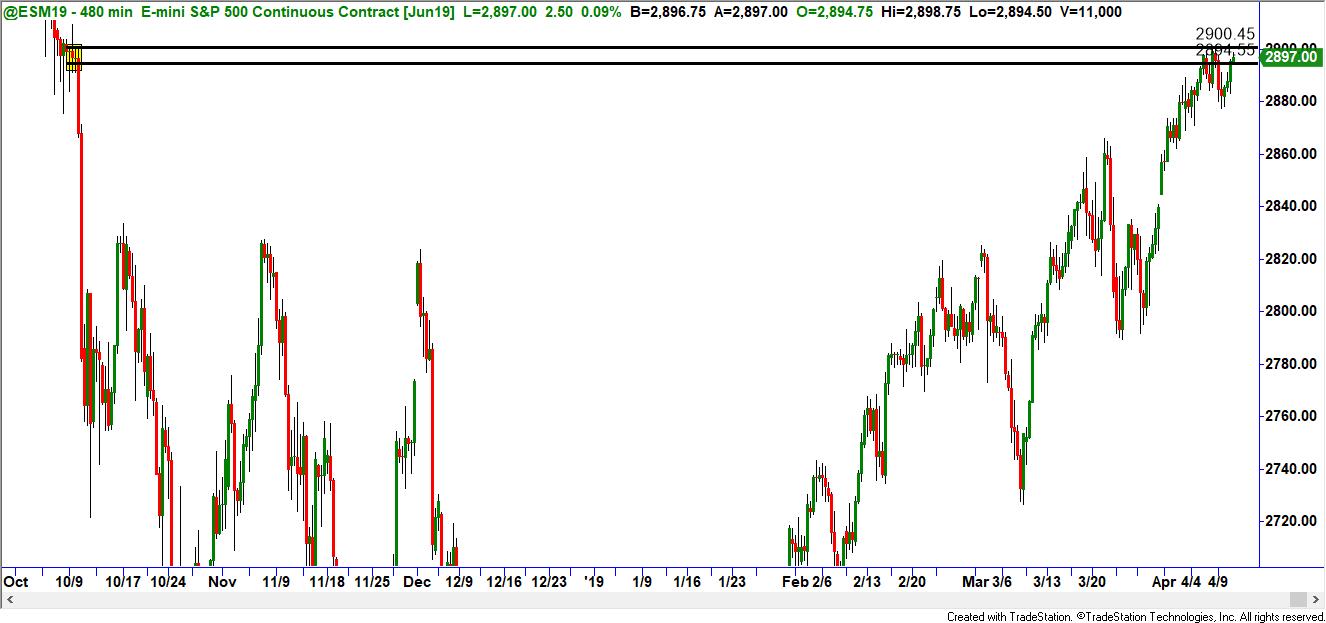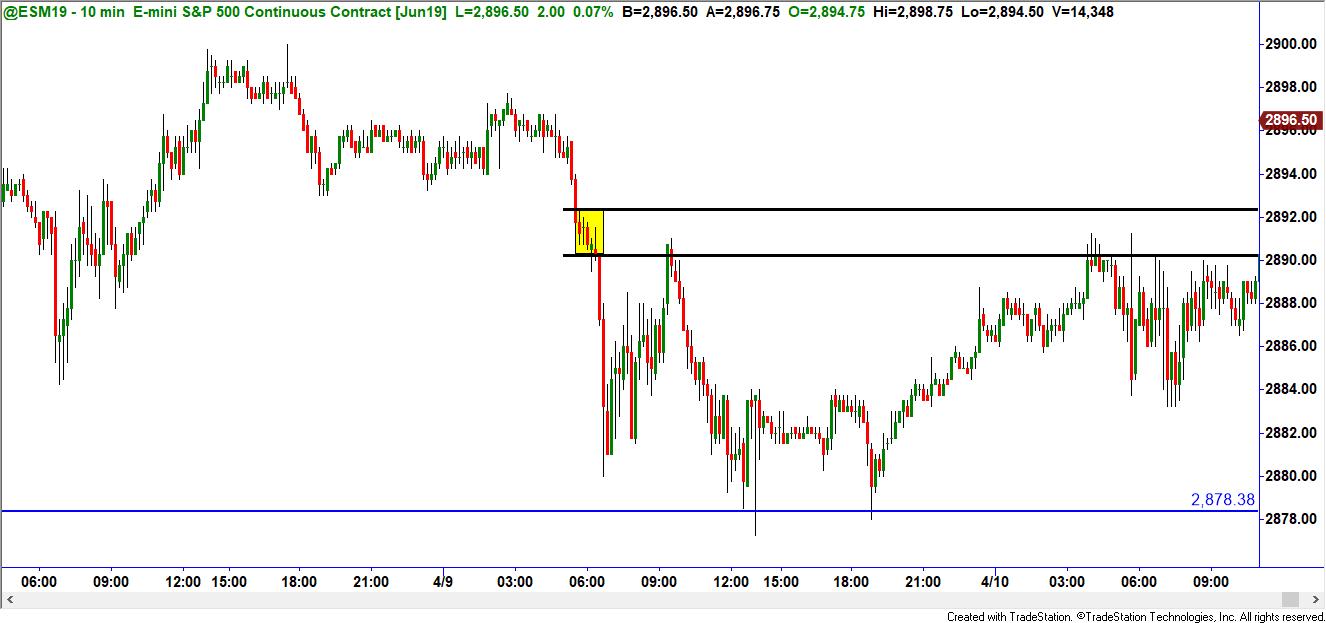One of the many challenges a new trader faces is finding the optimal time interval for the candlesticks they plot on their charts. The trading approach or style a trader decides to implement will, of course, have a big influence. For instance, a weekly income trader (one who intends on holding positions for days and weeks) will have little use for a 5 minute chart. On the other hand, a short-term income trader may find a 5 minute chart an essential part of their analysis.
The most commonly used time frames for short-term traders are: Daily, 60-minute and 5-minute candles. When deciding which period to utilize, one must keep in mind that the shorter the time frame, the noisier the chart. In other words, the shorter time frames generate many more zones; however, these zones have a higher propensity to fail.
Traders that use ultra short-term charts (1 minute or less) are usually what we refer to in the industry as scalpers. These traders are in and out of the market in rapid-fire succession, typically taking 3 to 5 tick profits (futures markets); they compensate for the high commission costs and the smaller profits by having a high win-to-loss ratio (usually over 80%). This type of trading is not something I recommend for the new trader. This is partly because the approach requires a high degree of skill which can only be acquired through vast experience; and the competitive landscape for this type of trading is very crowded. Scalping is done mostly by high speed computers executing algorithms. The odds of competing successfully against computers is very low.
Those of us that look for bigger moves on an intraday basis observe several time frames simultaneously, which can be helpful to minimize risk and maximize the potential of our trades.
To illustrate this point, let’s look at a recent example in the E-Mini S&P 500. Below is an eight-hour chart of the aforementioned ES. Note that price had rallied into the Supply and started to fall away. The key is that this shorting opportunity had a high likelihood of selling off to the next demand zone. We must remember that trading is based on probabilities and we never have any certainty of success. What we do with these time frames is simply increase our odds of success.
Then, if we drill down to the shorter time frame (ten-minute), we are able to spot a low risk entry within the confines of the higher location (close to the higher time frame supply).
The ten-minute chart (shown above) gives us a low-risk entry because the basing in the zone is narrower on the smaller time-frame. This is true because the rate of change is less in smaller intervals.
Here’s the setup: The area highlighted in yellow is the entry. A limit order is placed at the proximal line and the stop is placed 2 ticks above the distal line.
Now that we’ve defined the entry and risk in this example, we need to find a profit objective that comports with a pre-determined risk-to-reward ratio.
For this, we return back to the hourly chart (magenta circled area shown below); observe that once price stopped falling it moved sharply higher from that point. Objectively, this suggests there are buyers there. We want to take profits before we reach the area that increases our probabilities of hitting our target (the blue line).
As you can see on the lower chart, this trade gave us an extremely favorable risk-to-reward ratio and turned well before the pivot low was reached. Trades like these do not come along every day; nonetheless, the best way to identify them when they do is by implementing multiple time frame analysis. By utilizing the lower time frames as triggers along with higher time frames as filters, you can find more trading opportunities.
As a trader, you need to be cognizant of what the market is doing in all time frames, regardless of your style of trading. In my experience, I find novice traders become myopic (short-sighted) in how they view the market; and by doing so, fail to spot good trades and/or make failing trades.
So, try expanding your time-zone horizons and see if that helps you reach your trading goals.
Read the original article here - Multiple Time Frames Help Complete the Picture
This content is intended to provide educational information only. This information should not be construed as individual or customized legal, tax, financial or investment services. As each individual's situation is unique, a qualified professional should be consulted before making legal, tax, financial and investment decisions. The educational information provided in this article does not comprise any course or a part of any course that may be used as an educational credit for any certification purpose and will not prepare any User to be accredited for any licenses in any industry and will not prepare any User to get a job. Reproduced by permission from OTAcademy.com click here for Terms of Use: https://www.otacademy.com/about/terms
Editors’ Picks
EUR/USD holds below 1.0750 ahead of key US data

EUR/USD trades in a tight range below 1.0750 in the European session on Friday. The US Dollar struggles to gather strength ahead of key PCE Price Index data, the Fed's preferred gauge of inflation, and helps the pair hold its ground.
USD/JPY stays firm above 156.00 after BoJ Governor Ueda's comments

USD/JPY stays firm above 156.00 after surging above this level on the Bank of Japan's decision to leave the policy settings unchanged. BoJ Governor said weak Yen was not impacting prices but added that they will watch FX developments closely.
Gold price oscillates in a range as the focus remains glued to the US PCE Price Index

Gold price struggles to attract any meaningful buyers amid the emergence of fresh USD buying. Bets that the Fed will keep rates higher for longer amid sticky inflation help revive the USD demand.
Bitcoin Weekly Forecast: BTC’s next breakout could propel it to $80,000 Premium

Bitcoin’s recent price consolidation could be nearing its end as technical indicators and on-chain metrics suggest a potential upward breakout. However, this move would not be straightforward and could punish impatient investors.
US core PCE inflation set to signal firm price pressures as markets delay Federal Reserve rate cut bets

The core PCE Price Index, which excludes volatile food and energy prices, is seen as the more influential measure of inflation in terms of Fed positioning. The index is forecast to rise 0.3% on a monthly basis in March, matching February’s increase.
RECOMMENDED LESSONS
Making money in forex is easy if you know how the bankers trade!
Discover how to make money in forex is easy if you know how the bankers trade!
5 Forex News Events You Need To Know
In the fast moving world of currency markets, it is extremely important for new traders to know the list of important forex news...
Top 10 Chart Patterns Every Trader Should Know
Chart patterns are one of the most effective trading tools for a trader. They are pure price-action, and form on the basis of underlying buying and...
7 Ways to Avoid Forex Scams
The forex industry is recently seeing more and more scams. Here are 7 ways to avoid losing your money in such scams: Forex scams are becoming frequent. Michael Greenberg reports on luxurious expenses, including a submarine bought from the money taken from forex traders. Here’s another report of a forex fraud. So, how can we avoid falling in such forex scams?
What Are the 10 Fatal Mistakes Traders Make
Trading is exciting. Trading is hard. Trading is extremely hard. Some say that it takes more than 10,000 hours to master. Others believe that trading is the way to quick riches. They might be both wrong. What is important to know that no matter how experienced you are, mistakes will be part of the trading process.




